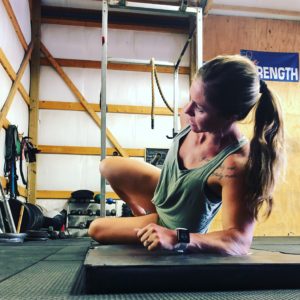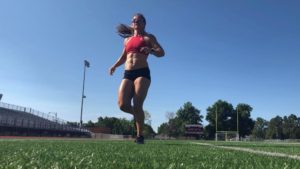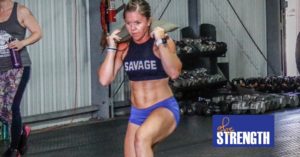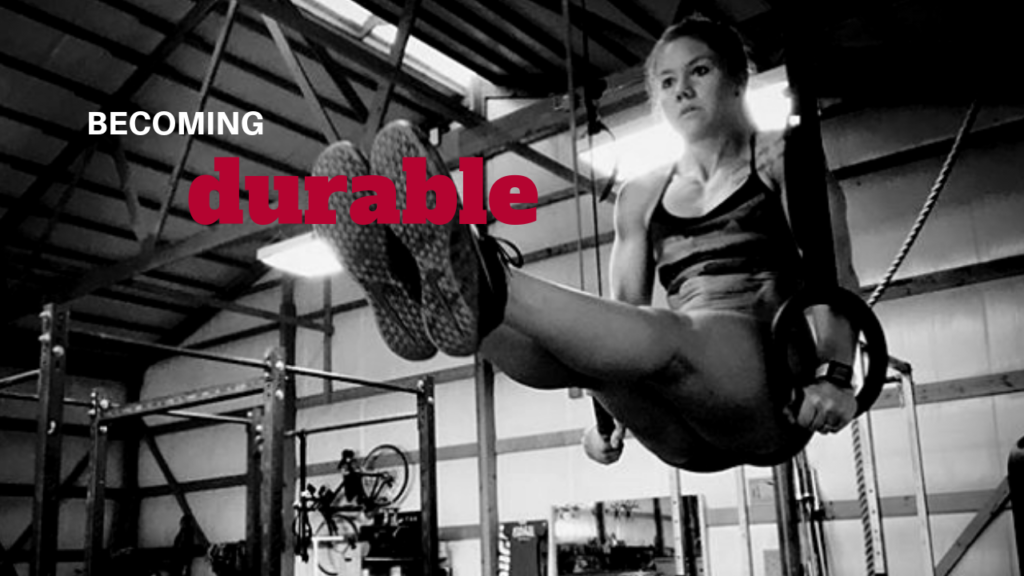In Part one of this series, I shared my decision to use a non-surgical shoulder rehab approach for my shoulder injuries over the past year. It was an emotional decision and a struggle somedays to stick with this decision. But along this path, I was introduced to a Doctor and now friend, Dr. Jared Shoemaker, who walked me through a form of rehab using DNS (dynamic neuromuscular stability) principles. In addition to my shoulder, we discovered instabilities along my whole left side of my body with movements, as well as Diastasis Recti from my last child. So we addressed all of these broken patterns of movement, by creating new neuropathways of communication from my brain, to my weak areas, which would help provide stability for all joints in a safe, pain-free way. In Part two, I shared a few of those exercises and methods of training I employed the past 8-9 months. And now I’m here to update you with where I am now, almost a year into the process…
Non-surgical Shoulder Rehab Week by Week
Typical weekly programming for me during these past six months has included:
-
- Landmine deadlifts, and other deadlift variations
- Landmine kneeling, single arm press
- Single Arm rows, bear position
- Front squats
- DNS: 0-3 mos, 6-7 mos (prone, supine)
- Box Jumps
- Sled Push/Pull
- Heavy carries
Each day had a different theme: hinge or squat/press.
Also, during this time, I decided to focus my energy toward cleaning up my nutrition. I know enough about myself to know I am most motivated by a purpose. I like to be working  toward something. Usually that was a competition, lifting meet, or event that I was training with intentions of performing at my best. Being an athlete my whole life, I realized you never really lose that championship mindset. I also felt that this would help reduce inflammation in my body and help assist healing. I cut out a lot of the red meat I was consuming, increased carbs and fiber and reduced fat intake. I dropped 9 lbs. and 5% body fat. I also knew having less body weight would help me with gymnastics movements that previously caused a lot of strain on my shoulder.
toward something. Usually that was a competition, lifting meet, or event that I was training with intentions of performing at my best. Being an athlete my whole life, I realized you never really lose that championship mindset. I also felt that this would help reduce inflammation in my body and help assist healing. I cut out a lot of the red meat I was consuming, increased carbs and fiber and reduced fat intake. I dropped 9 lbs. and 5% body fat. I also knew having less body weight would help me with gymnastics movements that previously caused a lot of strain on my shoulder.
And throughout this entire time,
I kept myself focused on the end goal— avoiding surgery. I was willing to do anything and everything to make this happen.
By about 6 months in, I was able to start adding onto the current movements I was doing on the floor in 0-3 months positions, prone and supine, and eventually worked to 6-7 months positions and movements.
I added in some weight and slowly returned to a few of my former lifts/skills. Ring rows, pull ups, overhead press, push jerk, snatch with PVC pipe, and swimming were just a few I tested out once a week. It was humbling to start over because my brain had to re-figure communication this new way—therefore it was slower. I felt weak and fatigued quickly. But I also realized how wrong I was moving before and was grateful to have had the expertise and coaching with Dr. Shoemaker that I did to make a change in what I hope will make me a healthier athlete longer. I am sure he got tired of listening to my frustrations, and questions about how movements, and questions about videos to assess how much progress was being made…but I was determined to make this work!
FAST Forward to Today
I will always be restricted in the amount of volume I can complete in a week with movements regarding my shoulder; this is a realization I’ve come to accept. Therefore, I have to choose wisely in my weekly approach to training. And sometimes, this is a day to day process. I listen to my body in more ways than just gauging fatigue and soreness. Now I feel a sense of neurological fatigue. I can sense when my Central Nervous System is overloaded because I can’t control my core or maintain stability in typically “easy” movements. My brain to body communication is slow.
 I know this is a sign to rest, recover and not push myself because if my brain is not communicating well with my nervous system, I know my joints are not stable enough to move through a full range of motion—it is just a fact. And this is a new insight I didn’t have before completing dynamic neuromuscular stability (DNS) training and movements.
I know this is a sign to rest, recover and not push myself because if my brain is not communicating well with my nervous system, I know my joints are not stable enough to move through a full range of motion—it is just a fact. And this is a new insight I didn’t have before completing dynamic neuromuscular stability (DNS) training and movements.
I am still in the heart of this journey. I’m still learning what I can handle and cannot. I’m learning that movements I used to complete without a second thought are no longer safe. I only complete kipping gymnastics movements when I absolutely have to, and have eliminated a lot of movements that put stress on my diastasis recti until it is healed, which include ring pull ups, planks, GHD sit ups, and L-Sits.
My mindset is different too
Now I’m lifting for health and longevity not for that next PR or podium finish. It is part of the identity shift I’ve had to work through during the past 6 months as well. When I was  strong, and known for my strength with a barbell in hand. When that was taken away from me…I had to revisit what strength actually was. And that was through the unseen, the unsexy, non-flashy training I put in behind the scenes. Because NOW I was training for ME, and fighting for a future in lifting and competing.
strong, and known for my strength with a barbell in hand. When that was taken away from me…I had to revisit what strength actually was. And that was through the unseen, the unsexy, non-flashy training I put in behind the scenes. Because NOW I was training for ME, and fighting for a future in lifting and competing.
I am training for life. Health. And happiness.
But probably the greatest lesson has been the gift of paying forward what I’ve been given. Being coached and mentored by Dr Jared Shoemaker the last year has changed my entire approach to training others, and as a result, has made me a better trainer and coach. Being able to take what was a career-ending injury and turn it into something good and useful for people, THAT IS the best result. Dr. Shoemaker and I are now being asked to host clinics and share this information with athletes and coaches applying DNS principles and body movement to PREVENT injuries. I know personally, I am most passionate about sharing experiences that I know have helped me, and this is one I 100% believe in, because here we are a year in to this process; I move pain-free, and I’m considering entering a weight-lifting or CrossFit-style competition in the next few months. All things I wasn’t sure would be options again, when I began a year ago.
What a difference a year makes, in so many aspects of this journey.


A motivating and inspiring read.
A motivating and inspiring read.